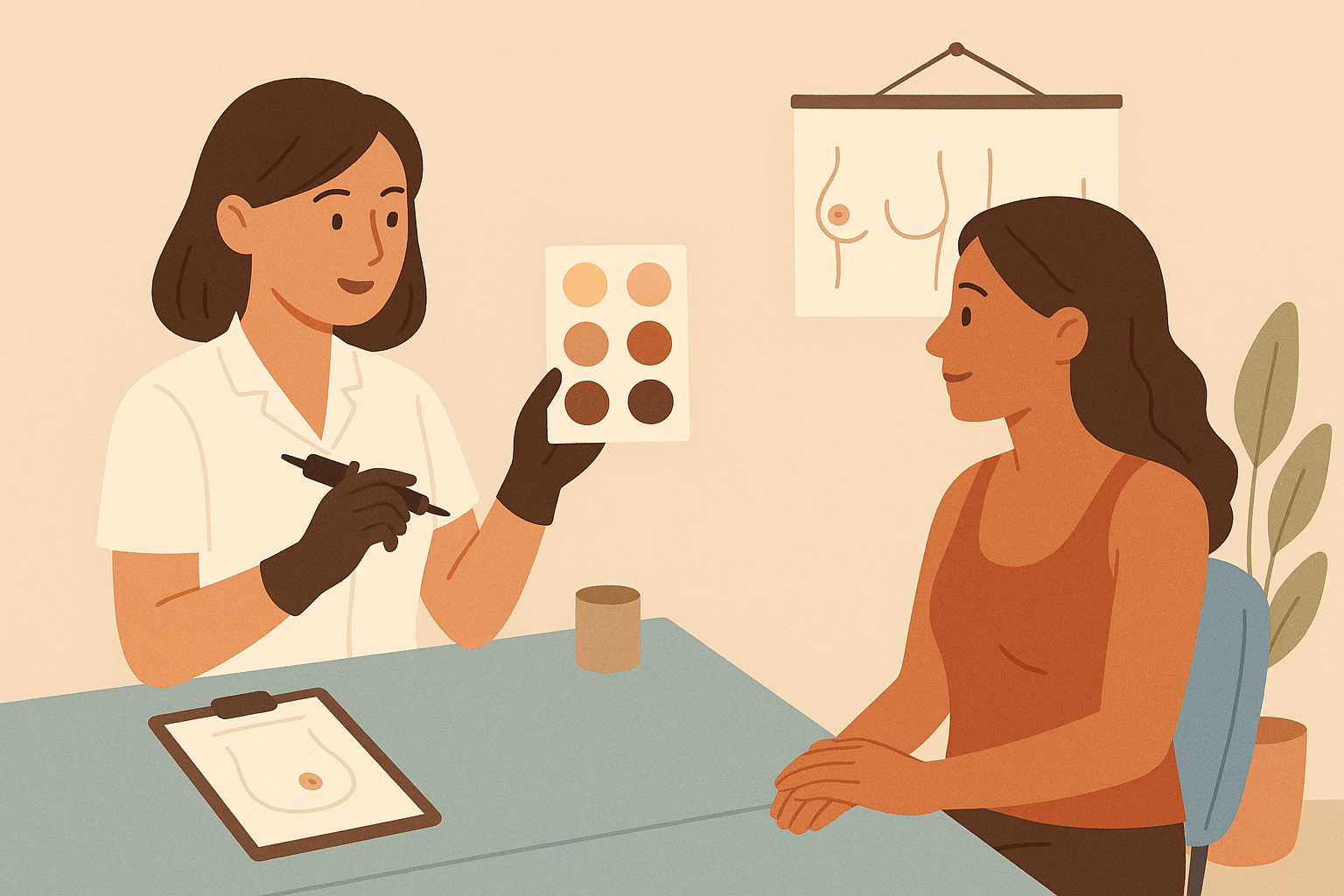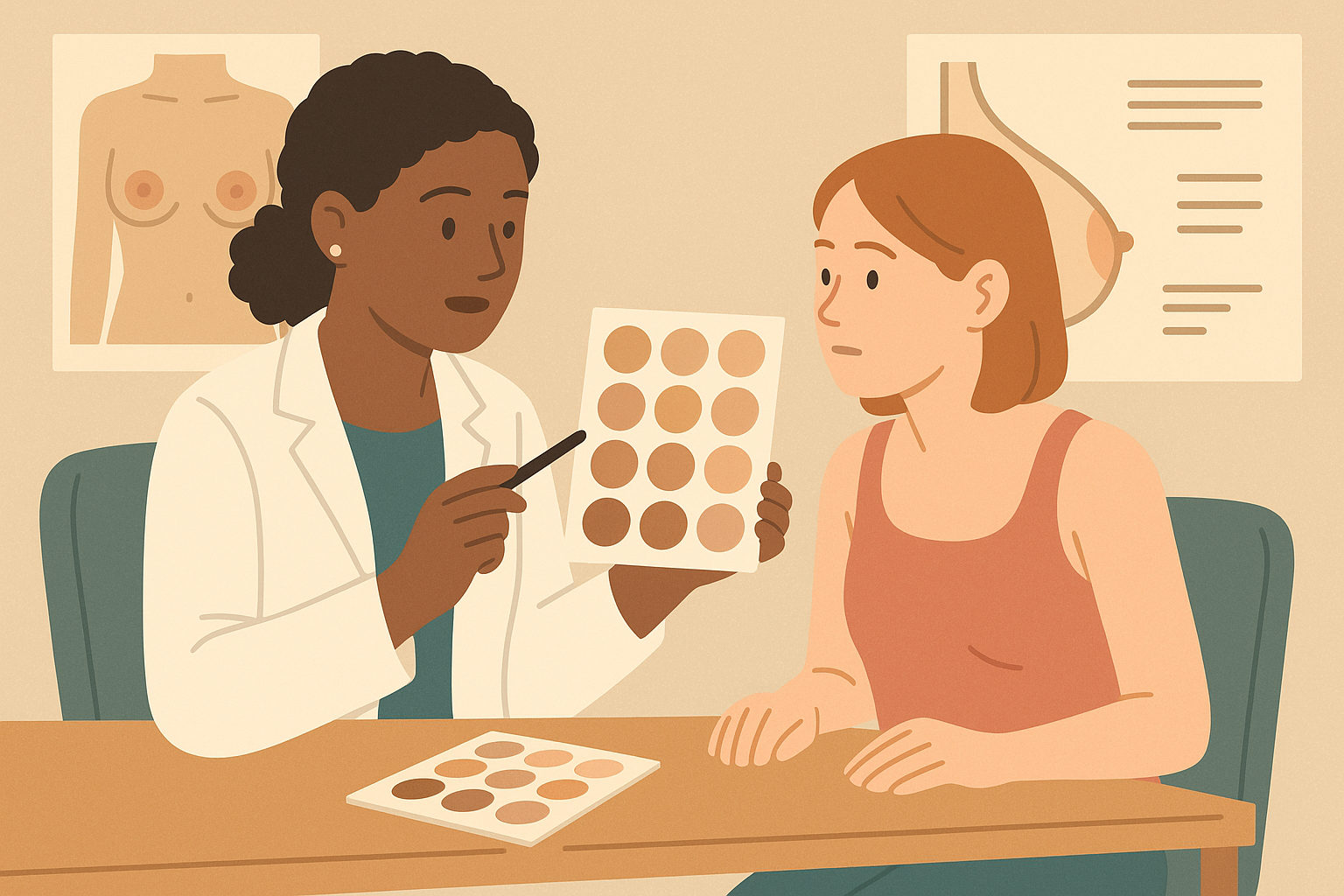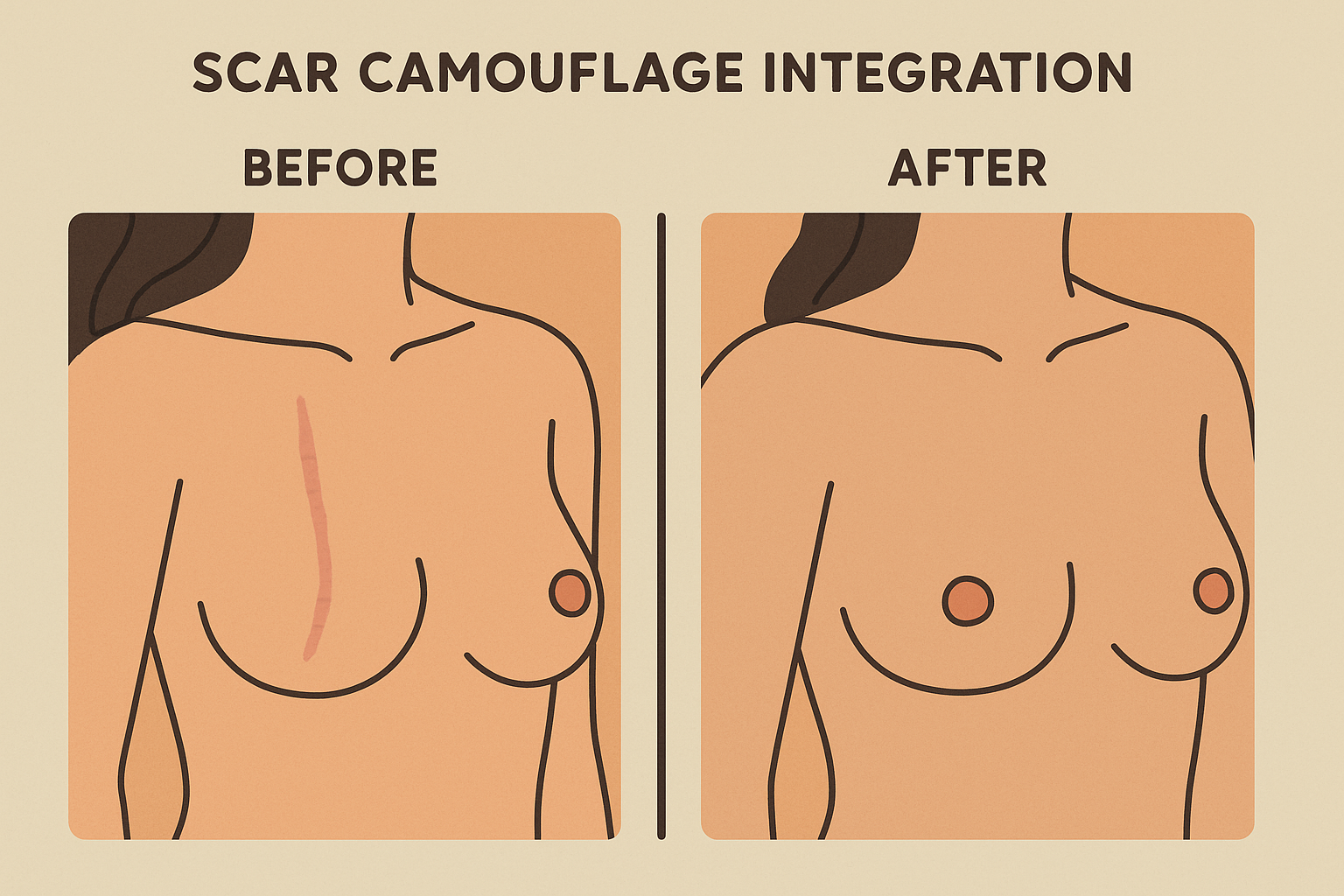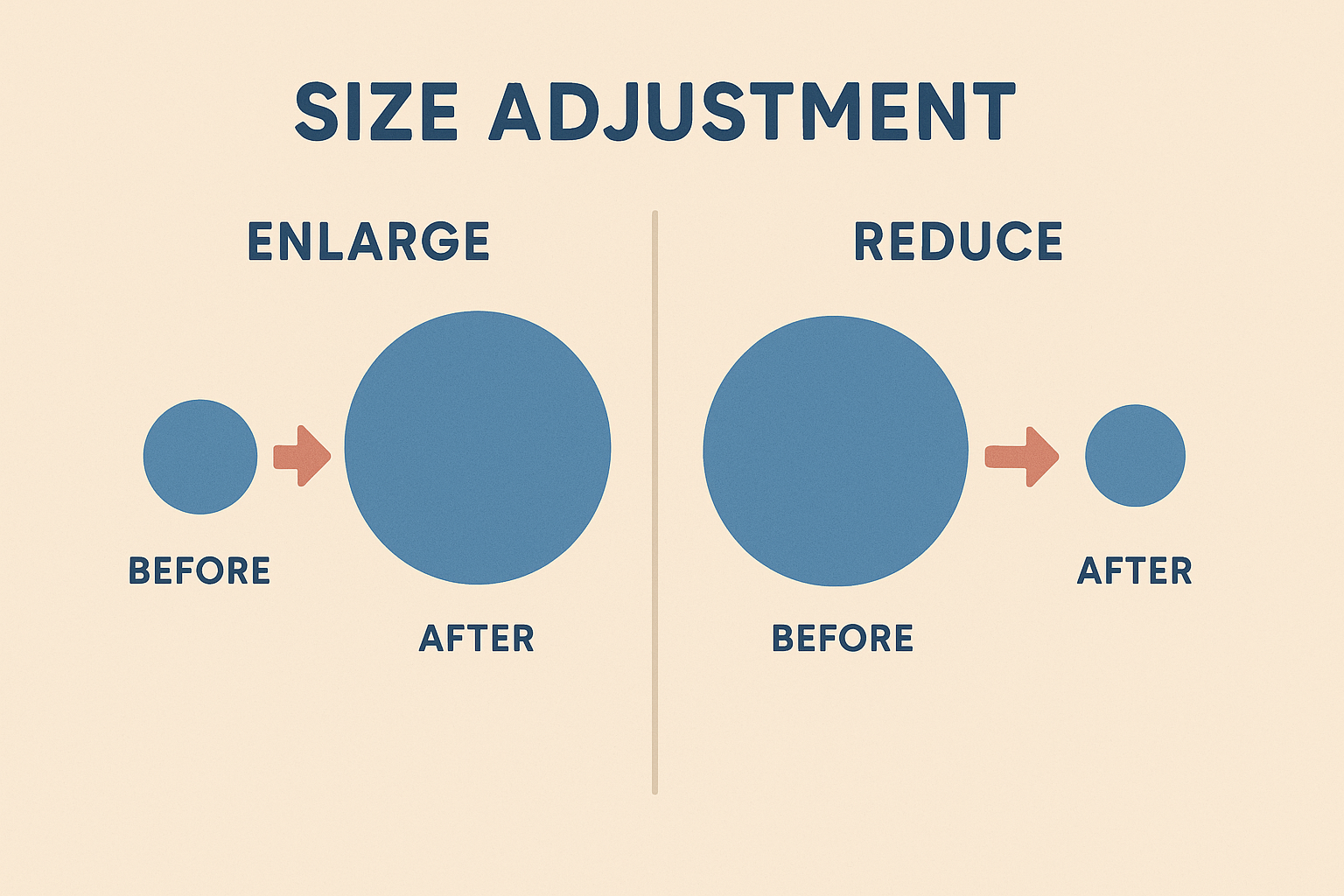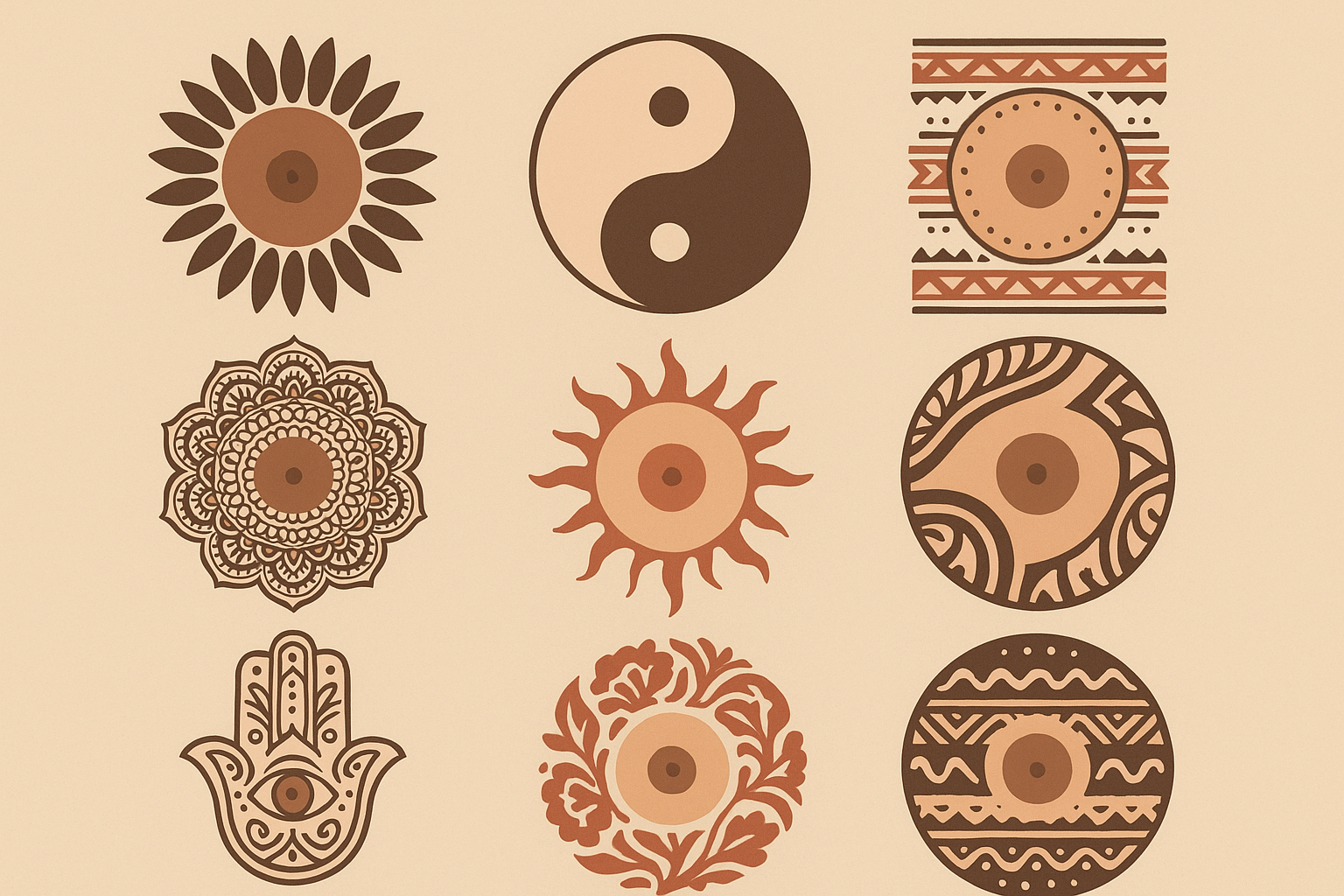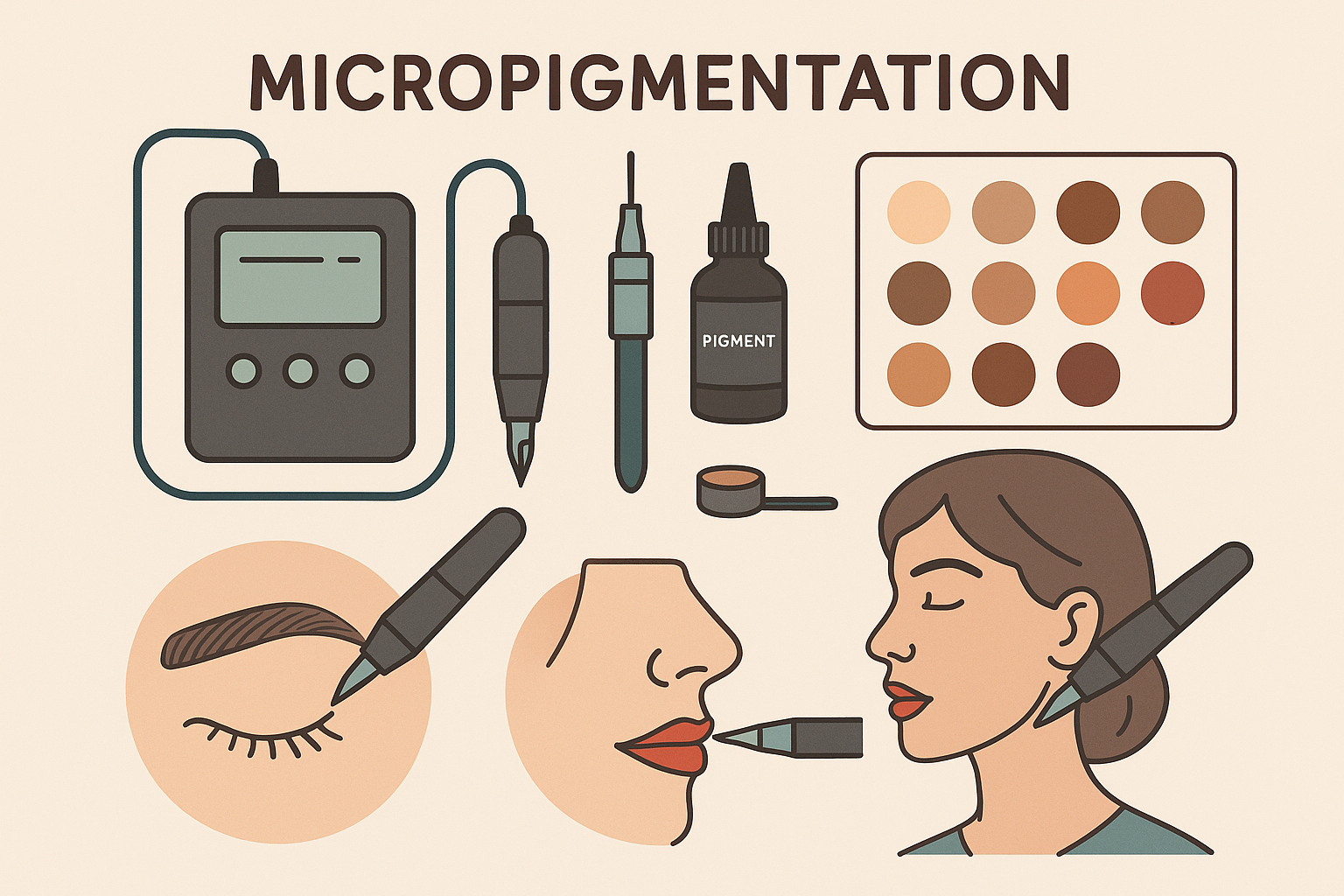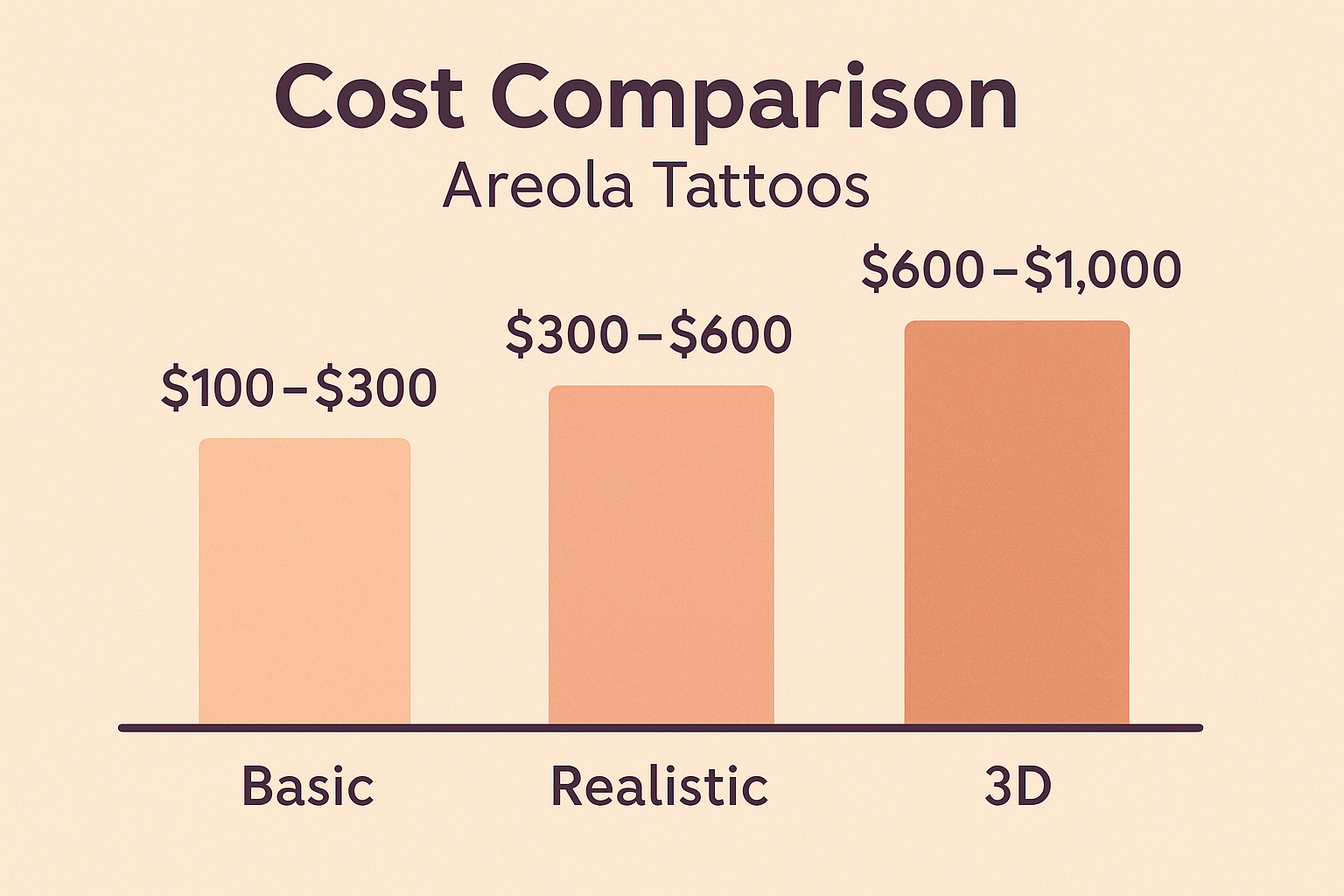25 Stunning Areola Tattoo Ideas That Will Transform Your Body Art Journey
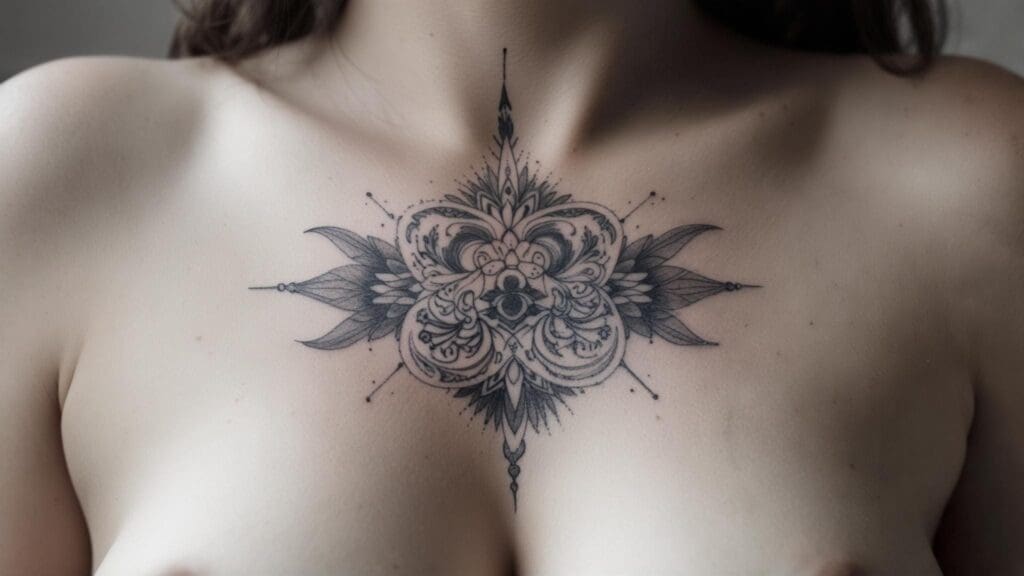
When my friend Sarah was researching areola tattoo options after her mastectomy, she called me in tears. “I’m so overwhelmed,” she said. “There are so many choices, and I don’t even know where to start.” That conversation sparked my deep dive into understanding these life-changing procedures.
The good news? Almost everyone who gets this done is really happy with the results. One study from Bellvitge University Hospital found that 96 out of 100 people were satisfied with their areola reconstruction, with satisfaction scores hitting 4.4 out of 5 (source).
If you’re thinking about getting reconstruction work done, exploring aesthetic enhancement, or diving into artistic expression, it’s really important to know what’s out there. There are way more options now than ever before – from life-changing medical procedures to stunning artistic statements.
Table of Contents
- Essential Factors to Consider Before Getting an Areola Tattoo
- Medical Reconstruction Areola Tattoos (Options 1-7)
- Aesthetic Enhancement Areola Tattoos (Options 8-14)
- Artistic and Decorative Areola Tattoos (Options 15-20)
- Specialized Techniques and Innovations (Options 21-25)
- Detailed Performance Analysis for Each Category
- How Each Option Measures Against Key Considerations
- How Tattoo Generator IQ Can Support Your Journey
TL;DR
- If you’re getting reconstruction work done, your insurance might actually cover it (and you’ll need a paramedical artist)
- Want to enhance what you already have? There are tons of options to improve color, size, or symmetry
- Feeling artistic? You can combine traditional tattooing with medical expertise for creative expression
- New techniques like micropigmentation offer semi-permanent alternatives that might be perfect for you
- Color matching and finding the right artist are super important, no matter what route you choose
- Healing time varies a lot depending on what type of work you’re getting done
- Costs range from potentially free (insurance-covered) to premium artistic work
Essential Factors to Consider Before Getting an Areola Tattoo
Here’s the thing – whether you’re getting medical reconstruction or aesthetic enhancement changes everything about your experience. Medical reconstruction (usually after mastectomy) requires artists with special paramedical training, while aesthetic work follows regular tattoo protocols. This affects who you can work with, how long healing takes, whether insurance covers it, and even what kind of ink gets used.
I know what you’re thinking – “Will this hurt?” The chest area does rank higher on tattoo pain levels for women, but honestly, most people find it way more manageable than they expected with proper prep and aftercare.
| Factor | Medical Reconstruction | Aesthetic Enhancement | Artistic Expression |
|---|---|---|---|
| Artist Certification | Paramedical required | Traditional tattoo license | Traditional + artistic portfolio |
| Insurance Coverage | Often covered | Rarely covered | Never covered |
| Healing Time | 2-4 weeks | 1-3 weeks | 2-4 weeks |
| Touch-up Frequency | Every 2-3 years | Every 3-5 years | Every 5-7 years |
| Average Cost | $300-800 (or covered) | $400-1,200 | $800-2,500 |
| Session Duration | 2-4 hours | 1-3 hours | 3-6 hours |
Your artist’s qualifications really matter when you’re dealing with such sensitive and visible work. You’ll want to make sure they have the right certifications for medical work, check out their portfolio specifically for areola examples, and confirm they really understand skin tone matching and color theory. Experience with different skin types and proper medical-grade equipment? Non-negotiable.
Color matching is trickier than you might think. Your artist needs to consider your natural skin undertones, how colors change as you age, seasonal variations in your skin tone, and how pigments heal and fade over time. Most areola tattoo work needs touch-ups every 2-3 years to keep looking fresh.
Let me tell you about Maria, a 45-year-old graphic designer who initially chose a regular tattoo artist for her aesthetic enhancement. But after doing more research on the specialized skills needed for natural-looking color matching, she switched to a paramedical artist with 8 years of areola-specific experience. The result? A perfectly matched enhancement that looked completely natural. Her friend who stuck with the general tattoo artist? She ended up with slightly off-color results that needed expensive correction work.
Healing for areola tattoos is different from other body areas because the skin is so sensitive. You’ll need gentle aftercare products, should expect some color changes during healing, need to plan for longer healing times, and follow specific cleaning and moisturizing protocols.
Let’s be real about money for a second. If you’re getting reconstruction work, call your insurance company first – you might be pleasantly surprised. For everything else, yeah, it’s an investment. Don’t forget to budget for touch-up sessions, maintenance costs, and the fact that prices vary a lot depending on where you live.
Medical Reconstruction Areola Tattoos
Medical reconstruction tattoos are for people who need areola recreation after mastectomy or other surgical procedures. These options focus on realistic appearance and natural healing, requiring specialized paramedical training and often qualifying for insurance coverage.
Just like with other medical tattoo procedures, understanding tattoo pricing factors helps you budget appropriately. Medical procedures often have different pricing structures than traditional tattoo work.
1. Traditional 3D Nipple Tattoo
Think of this like those amazing street chalk artists who make flat drawings look like they’re popping off the sidewalk. Your tattoo artist is basically doing the same thing – creating the illusion of dimension on a flat surface. It’s the gold standard of medical areola tattooing.
Your artist will use 3-5 different pigment shades to build realistic depth, usually taking 2-3 hours for the initial session plus 1-2 touch-ups at 6-8 week intervals. They start with base tones that match your skin, then add darker shades for depth and lighter tones for highlights.
The healing timeline spans 2-3 weeks for initial healing, with 6-8 weeks needed for full color settling. Custom mixed colors get matched to your surrounding skin tone, and you’ll use medical-grade healing ointment with specific aftercare protocols.
2. Simplified Areola Restoration
Perfect if you want something more understated. This approach focuses on the essentials – color matching and basic shape recreation. The healing process is usually faster and less complex compared to 3D work, making it great when medical considerations make complex shading not the best choice.
This basic recreation focuses on color matching without nipple projection – ideal if you prefer subtlety or have specific medical considerations. The single-session procedure usually takes 1-2 hours and needs fewer touch-ups than more complex techniques.
3. Asymmetry Correction Tattoo
This one’s tough because your artist has to perfectly match an existing natural areola. Success depends on precise color matching, size coordination, and really understanding how pigments heal in different skin types.
It’s designed to match an existing natural areola after reconstruction on one side. This technique requires the highest level of artistic skill, focusing on creating perfect symmetry between reconstructed and natural sides, often needing multiple sessions to get it just right.
4. Scar Camouflage Integration
This addresses both scar camouflage and areola recreation at the same time, blending surgical scars into your natural skin tone while creating realistic areola appearance. It’s a comprehensive approach that requires artists skilled in both scar work and areola recreation.
Your artist combines multiple specialized techniques in a single treatment plan. They need to understand how different tissue types accept pigment and how to create seamless transitions between scar tissue and healthy skin.
5. Textured Areola Tattoo
This adds enhanced realism through subtle texture work that mimics natural areola skin texture. Using stippling and dotwork techniques, your artist creates surface variation that adds authenticity to the overall appearance.
This technique incorporates subtle texture work using specialized methods to recreate the natural bumpy texture found on real areolas. The process takes additional time but produces remarkably realistic results that look natural even up close.
6. Graduated Color Areola
Natural areola pigmentation patterns get recreated through careful color variation from darker outer edges to lighter center areas. This technique requires understanding natural pigmentation patterns and how to recreate them convincingly.
The focus is on creating natural color gradation that mimics how real areolas appear. Artists study natural pigmentation patterns extensively to recreate authentic-looking color transitions.
7. Minimalist Medical Tattoo
Clean, simple areola design focusing on essential elements without complex shading works well if you prefer understated results. This approach suits people with specific medical considerations that make complex procedures not the best choice.
This option provides basic color and shape recreation without elaborate artistic elements. The straightforward approach reduces session time and healing complexity while still achieving natural-looking results.
Aesthetic Enhancement Areola Tattoos
Aesthetic enhancement tattoos improve the appearance of existing areolas through color adjustment, size modification, symmetry correction, and definition enhancement, following traditional tattoo protocols rather than medical procedures.
Before you commit to aesthetic enhancement, you might want to check out simple tattoo designs to understand how minimalist approaches can create maximum impact. Sometimes subtle changes produce the most satisfying results.
Let me tell you about Jessica, a 28-year-old fitness instructor who felt self-conscious about her naturally pale areolas that seemed to fade against her skin tone. After consulting with a specialized areola tattoo artist, she chose a color enhancement procedure that deepened her natural tone by just two shades. The subtle change gave her the confidence to wear fitted workout clothes without feeling self-conscious, and the natural-looking results meant no one could tell she’d had any work done.
8. Color Enhancement Tattoo
This is popular among people wanting more defined or vibrant natural coloration. The technique carefully selects pigments that enhance rather than replace your natural tones. The healing process typically takes less time and needs fewer touch-ups compared to reconstruction work.
This method focuses on deepening or adjusting existing color without changing shape or size. Artists work with your natural pigmentation to create more defined, vibrant results that look completely natural.
9. Size Adjustment Tattoo
It’s pretty amazing – your artist can actually make your areolas look bigger or smaller just by playing with colors and shadows. No surgery required. Enlargement techniques use graduated shading from dark to light, while reduction techniques use strategic color placement to minimize visual impact.
This procedure requires understanding visual perception and how color placement affects apparent size. Artists use optical illusions to create the desired size appearance without surgical intervention.
10. Symmetry Correction (Aesthetic)
This balances naturally asymmetrical areolas for improved aesthetic appearance. The procedure requires skilled color matching and size coordination, focusing on aesthetic improvement rather than medical necessity.
These tattoos address natural asymmetry that bothers some people. The process involves careful measurement and color matching to create balanced, symmetrical appearance between both sides.
11. Areola Outline Definition
Creating or enhancing the natural border between areola and surrounding skin produces more defined appearance. Precise pigment placement establishes clear boundaries that enhance your natural anatomy.
This technique focuses on creating crisp, well-defined edges where the areola meets surrounding skin. The subtle enhancement makes existing areolas appear more prominent and defined.
12. Gradient Shading Enhancement
Professional shading techniques add depth and dimension to existing areolas, enhancing natural appearance without overwhelming your existing features. The subtle enhancement creates more defined and attractive results.
This method adds professional-quality shading to create more dimensional appearance. Artists use multiple tones to create depth while maintaining natural-looking results.
13. Pink Ink Tattoo Accents
Subtle pink ink applications enhance natural coloration, proving particularly popular among people with lighter skin tones. Specialized pigments designed for delicate areola work create natural-looking enhancement.
These tattoos use carefully selected pink tones to enhance natural coloration. The technique works especially well for people with lighter complexions who want more defined areola appearance.
14. Areola Contouring
Light and dark pigments create illusions of different areola shapes or enhanced projection through strategic color placement and shading. This advanced technique requires understanding light theory and dimensional illusion.
This method uses advanced shading principles to create the appearance of different shapes or enhanced dimension. Artists manipulate light and shadow effects to achieve desired visual results.
Artistic and Decorative Areola Tattoos
Artistic options combine traditional tattooing skills with anatomical knowledge to create decorative enhancements that maintain natural appearance while adding personal expression through floral, geometric, cultural, or abstract designs.
If you’re interested in artistic expression, you might also explore floral tattoo designs for inspiration on incorporating natural elements into areola work. Floral elements can beautifully complement the natural curves and shapes of the chest area.
15. Floral Areola Designs
Delicate floral elements incorporated around or within the areola area create artistic enhancement while maintaining natural appearance. These designs require artists skilled in both paramedical tattooing and artistic work, with careful planning ensuring the artwork complements rather than overwhelms your natural anatomy.
This approach combines medical precision with artistic creativity. Artists need to balance decorative elements with natural appearance, creating designs that enhance rather than distract from your natural features.
16. Geometric Pattern Integration
Subtle geometric elements complement your natural areola shape while adding artistic flair. The challenge lies in balancing mathematical precision with organic anatomy to create harmonious results.
This technique incorporates geometric patterns that work with natural body curves. Artists need to understand both geometric principles and anatomical considerations to create successful designs.
17. Mandala-Inspired Areola Art
Circular mandala patterns adapted to work with natural areola placement create spiritual and artistic significance. Careful planning ensures the artwork enhances rather than overwhelms your natural anatomy while maintaining meaningful symbolism.
This style draws from traditional mandala designs, adapting circular patterns to complement natural areola shape. The spiritual significance adds personal meaning to the aesthetic enhancement.
18. Watercolor Effect Tattoos
Soft, watercolor-style pigmentation creates artistic enhancement while maintaining natural appearance. Specialized blending techniques and color transitions produce ethereal effects that complement your natural coloring.
The procedure for watercolor effects requires advanced blending skills and understanding of how different pigments interact. Artists create soft, flowing color transitions that mimic watercolor painting techniques.
19. Minimalist Line Work
Clean, simple line work enhances natural areola borders with subtle artistic elements. The focus remains on elegant simplicity rather than complex designs, creating sophisticated enhancement.
This method emphasizes clean lines and minimal design elements. The understated approach creates elegant enhancement without overwhelming natural features.
20. Cultural Symbol Integration
Meaningful cultural symbols or patterns that hold personal significance get incorporated while enhancing the areola area. This approach requires cultural sensitivity and artistic skill to create respectful, meaningful results.
This option allows personal expression through culturally significant designs. Artists need to understand both the cultural meaning and technical requirements for successful integration.
Specialized Techniques and Innovations
Cutting-edge techniques and innovative approaches offer unique benefits through advanced pigment technology, specialized equipment, and experimental methods that push the boundaries of traditional areola tattooing.
Understanding proper tattoo aftercare becomes crucial for specialized techniques that may require unique healing protocols. Advanced procedures often need modified aftercare routines for optimal results.
21. 3D Areola Tattooing with Projection
This is the most advanced technique available today – creating the illusion of nipple projection through masterful shading and highlighting without any actual dimension. Artists spend years mastering the complex shading methods needed to create convincing nipple projection using just pigment.
The process involves understanding how light naturally falls on the body and recreating those shadow patterns with ink. It typically requires 3-4 sessions spaced 6-8 weeks apart, with each session building upon the previous work to create increasingly realistic results.
22. Micropigmentation Areola
This semi-permanent technique uses specialized equipment for subtle, natural-looking enhancement with shorter longevity. The gentler healing process compared to traditional tattooing makes this appealing if you want less permanent commitment.
This method offers a middle ground between permanent tattooing and temporary solutions. The specialized equipment deposits pigment at shallower depths, resulting in softer appearance and faster healing times.
| Technique | Longevity | Pain Level | Healing Time | Touch-up Frequency |
|---|---|---|---|---|
| Traditional Tattooing | 5-10 years | Moderate-High | 2-4 weeks | Every 3-5 years |
| Micropigmentation | 1-3 years | Low-Moderate | 1-2 weeks | Every 12-18 months |
| 3D Projection | 3-7 years | High | 3-4 weeks | Every 2-3 years |
| UV-Reactive Ink | 2-5 years | Moderate | 2-3 weeks | Every 2-4 years |
| Combination Work | 4-8 years | High | 3-5 weeks | Every 2-4 years |
23. Combination Scar and Areola Work
This comprehensive approach addresses both scar camouflage and areola recreation in a single treatment plan. Artists need skills in multiple specialized techniques to achieve optimal results across different tissue types.
This procedure tackles multiple challenges simultaneously, requiring extensive expertise in various tattooing methods. The complexity demands artists who understand how different skin types and tissue conditions respond to pigmentation.
24. Areola Tattoo with UV-Reactive Ink
This innovative approach uses inks that respond to UV light for unique aesthetic effects, primarily for artistic rather than medical applications. The UV-reactive properties create different appearances under various lighting conditions, though the newness of this technology means long-term effects remain unstudied.
This innovation appeals to people seeking unique artistic expression. However, unknown long-term effects require careful consideration and ongoing monitoring.
25. Maintenance and Touch-Up Protocols
Specialized refresh procedures designed to maintain color vibrancy and shape definition over time. Annual color assessment and systematic touch-up scheduling ensure long-term satisfaction with your areola tattoo investment.
Dr. Martinez, a paramedical tattoo artist in Miami, developed a comprehensive maintenance protocol for her areola tattoo clients. She schedules annual color assessments and provides detailed touch-up timelines based on each client’s skin type and lifestyle. Her client retention rate of 95% demonstrates how proper maintenance planning leads to long-term satisfaction and optimal results.
This maintenance approach involves regular evaluation of color retention, shape integrity, and overall appearance. Proactive touch-up scheduling prevents significant fading and maintains optimal results throughout the tattoo’s lifespan.
Detailed Performance Analysis for Each Category
Each areola tattoo category performs differently across key considerations including medical necessity, artist qualifications, color matching requirements, healing protocols, and cost factors, helping you make informed decisions based on your specific needs and priorities.
Medical reconstruction options consistently score highest for medical considerations and insurance coverage potential, requiring paramedical certification and specialized training. These procedures demand the most rigorous color matching and healing protocols but often provide the best value through insurance coverage.
Aesthetic enhancement options balance moderate medical considerations with strong color matching requirements. While requiring experienced tattoo artists rather than paramedical certification, these procedures still demand significant skill and experience for natural-looking results.
Artistic options require the highest level of combined artistic and technical skill, balancing creative expression with anatomical knowledge. These procedures typically command premium pricing due to specialized skill requirements and custom artistic work.
Specialized techniques represent cutting-edge approaches that often require the most advanced training and equipment. While offering unique benefits, these options typically involve higher costs and may have unknown long-term considerations.
The areola tattooing field continues evolving rapidly, with new techniques and technologies emerging regularly. Staying informed about these developments helps you make decisions based on the most current options available.
How Each Option Measures Against Key Considerations
Understanding how each areola tattoo option performs against critical factors helps you prioritize your needs and select the most appropriate technique for your situation. Different priorities lead to different optimal choices.
| Consideration | High Priority Options | Medium Priority Options | Lower Priority Options |
|---|---|---|---|
| Insurance Coverage | Traditional 3D, Simplified Restoration | Asymmetry Correction, Scar Integration | All Aesthetic & Artistic |
| Natural Appearance | 3D Projection, Graduated Color | Color Enhancement, Symmetry Correction | Artistic Designs |
| Artistic Expression | Floral, Mandala, Cultural Symbols | Watercolor, Geometric | Medical Reconstruction |
| Minimal Commitment | Micropigmentation, Pink Accents | Color Enhancement | 3D Projection, Combination Work |
| Quick Healing | Simplified Restoration, Micropigmentation | Color Enhancement | Combination Work, 3D Projection |
Artist qualification requirements vary dramatically across options. Medical reconstruction demands paramedical certification and specialized medical training, while aesthetic enhancement requires experienced tattoo artists with areola-specific portfolios.
Artistic options need combined artistic and technical skills, and specialized techniques require cutting-edge training. The field has become increasingly specialized, with artists focusing on specific techniques rather than offering general services.
Color matching criticality differs based on your goals. Medical reconstruction requires precise matching for natural appearance, aesthetic enhancement needs careful color selection for believable results, artistic options must balance creativity with natural appearance, and specialized techniques may offer advanced pigment technology.
Healing requirements range from medical-grade protocols for reconstruction work to standard tattoo aftercare for aesthetic procedures. Complex artistic work may require extended healing periods, while specialized techniques might have unique aftercare needs.
Here’s something nobody talks about enough – your tattoo is going to look a little weird while it’s healing. That’s normal! Don’t panic if the color looks too dark or the shape seems off during the first few weeks.
Cost considerations span from potentially insurance-covered medical procedures to premium-priced artistic work. Aesthetic procedures typically involve out-of-pocket expenses, while specialized techniques command higher prices due to advanced training and equipment requirements.
How Tattoo Generator IQ Can Support Your Journey
While areola tattoos require specialized medical expertise beyond traditional design, there are some helpful online tools that can give you a better sense of different tattoo styles and help you figure out what questions to ask your artist.
Our comprehensive AI tattoo generator guide can help you understand how technology supports the design process, even for specialized medical procedures. While AI can’t replace medical expertise, it can help visualize concepts and prepare for consultations.
Our educational content helps you understand the crucial distinctions between medical reconstruction, aesthetic enhancement, and artistic expression in areola tattooing. This knowledge empowers you to ask informed questions during consultations and make decisions aligned with your specific needs.
For those considering artistic enhancement options, our advanced AI can help visualize how decorative elements might complement medical reconstruction work. While we can’t generate medical tattoo designs, we can help you explore artistic concepts that might enhance your overall vision.
The platform’s educational resources help you develop the vocabulary and understanding necessary to communicate effectively with specialized paramedical tattoo artists. Understanding tattoo terminology, healing processes, and artistic principles makes consultations more productive and outcomes more satisfying.
Use our educational content to prepare comprehensive questions for consultations, understand what to expect during the process, and develop realistic expectations for outcomes and maintenance requirements. Our extensive style library helps you understand how different artistic approaches might work within the specialized context of areola tattooing.
Ready to explore your areola tattoo options with confidence? Visit Tattoo Generator IQ today to access our comprehensive educational resources and design exploration tools that will prepare you for meaningful conversations with qualified specialists.
Final Thoughts
Look, this decision isn’t easy. Whether you’re dealing with reconstruction after cancer or just want to feel more confident in your own skin, you deserve to have all the information to make the choice that’s right for YOU.
The 25 options we’ve explored offer solutions ranging from life-changing medical procedures to stunning artistic statements, each with unique benefits and considerations. Medical reconstruction options provide essential services for those recovering from mastectomy or other surgical procedures, often with insurance coverage and specialized medical protocols. Aesthetic enhancement options offer improvements to natural appearance through color, size, and symmetry adjustments. Artistic designs combine creative expression with anatomical knowledge for personalized results.
This isn’t just about how things look – it’s about how you FEEL. Whether you’re reclaiming your body after cancer or just want to feel more confident, that emotional piece is just as important as the technical stuff.
Remember that artist qualifications, color matching expertise, healing requirements, and cost considerations vary significantly across different areola tattoo options. Take time to research qualified practitioners, understand the commitment involved, and set realistic expectations for your chosen procedure.
Everyone’s journey is different. Some people want everything to look exactly like it did before. Others see this as a chance to make changes they’ve always wanted. Both approaches are totally valid.
Whatever path you choose, remember that this is YOUR journey. There’s no right or wrong answer – only what feels right for you. And honestly? The fact that you’re taking the time to research and understand your options shows you’re already on the right track.
The field continues advancing with new techniques, improved pigments, and better training programs for artists. Staying informed about these developments ensures you have access to the most current options available when making your decision.

